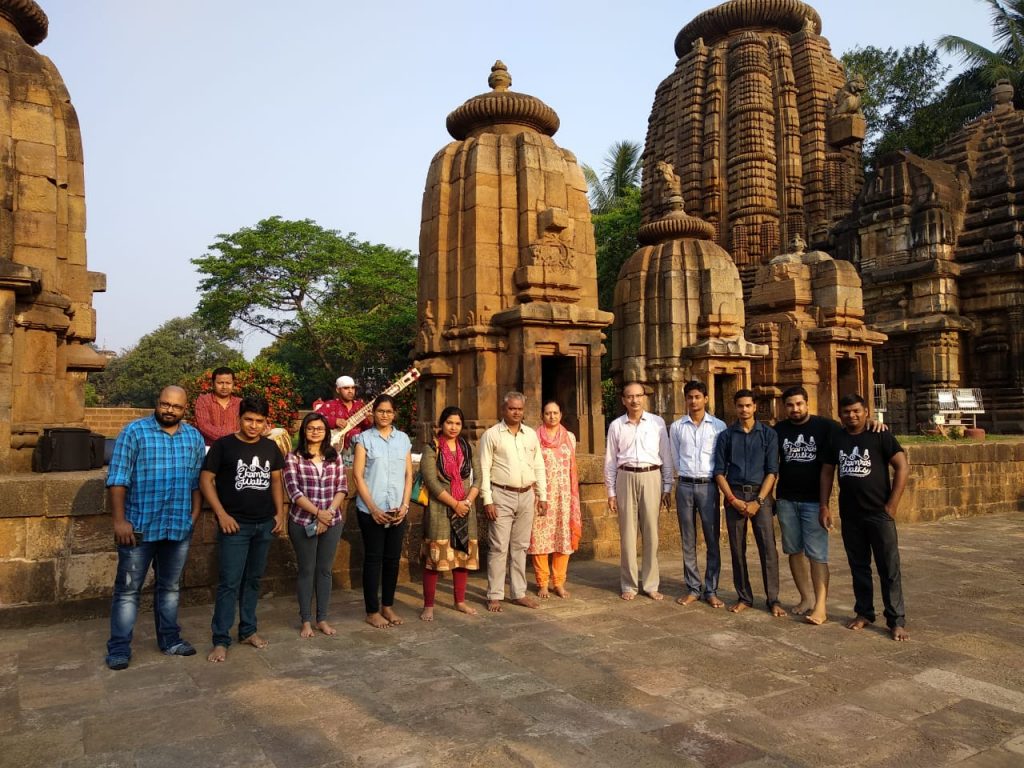Bhubaneswar: The beautiful temple carvings in the state influence textile designs, especially the tie-and-dye sarees from the western part of Odisha.
“The temple carvings have influenced sari designs of ‘Bandha’ or tie-and-dye ones. There could be other places across India where the tie-and-dye process is used in handloom products, but what Odisha produces is unique,” said Professor Monika Aggarwal of National Institute of Fashion Technology (NIFT). She joined the 117th Ekamra Walks (Old Town Circuit) along with her banker husband Arun Kumar Aggarwal and enjoyed the experience.
Prof Aggarwal, who was at NIFT Bhubaneswar earlier, had helped shape the fashion institute. Her contributions include designing the state’s tableau for various Delhi-based national events. “This unique bonding of stone carving and designs on saree by hand-woven coloured threads always create extraordinary creations which are loved by people across the globe.”
Calling for a detailed survey and capture of the designs and motifs on the various temples in the city, especially in the Old Town and adjoining areas, Prof Aggarwal, a well-known textile designer, researcher and a leading faculty member of NIFT with a pan-Indian reputation, said, “the young students of design, photography, art and architecture must try to understand the designs on the temple walls and understand their patterns and motifs.”
Leading tour guide and a common face with Ekamra Walks Satyaswaroop Mishra said, “The motifs on the temple walls like Mukteswar are also seen in temples in faraway lands like Cambodia and in the Angkor Wat. So, there could have been a great influence of Kalingan temple building style on them.”
Architect Aditi Goenka, who was also part of the walkers Sunday at the Old Town Heritage Tour, said: “The Kalingan style of architecture and temple building technique are special and have a unique signature of its own.”
Besides the early morning heritage walk in the Old Town area, an afternoon trail was organised at Kalabhoomi in Gandamunda area of the city at the Crafts Museum. The 41st walk at Kalabhoomi gave a deep understanding of crafts traditions of the state.
Lara Dalmia, a participant, said: “The museum is the place where we can see the essence of Odia culture. When people like us living in metros come here can actually realize the way our ancestors have shaped the cultural links.”
